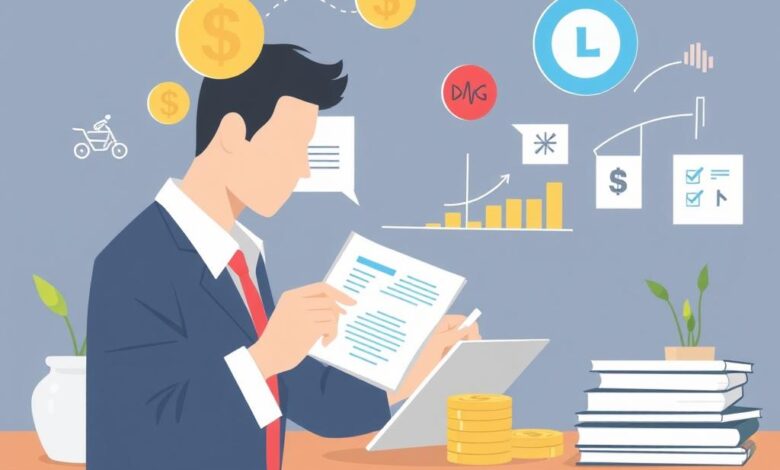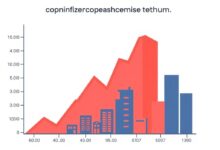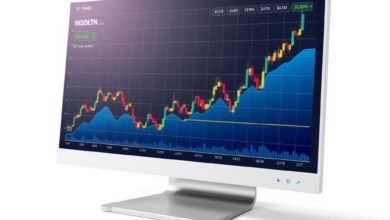What is inflation and how does it affect your savings?

To safeguard your money in a fluctuating economy, prioritize investments that outpace rising prices. Consider allocating funds to assets like stocks or real estate, which historically have preserved value over time. Diversifying your portfolio can mitigate risks associated with eroding purchasing power.
Stay informed about the economic indicators that influence price changes. Monitoring data such as consumer spending and interest rates will equip you with insights necessary for strategic financial decisions. Adjust your savings strategy accordingly, focusing on high-yield accounts or inflation-protected securities to maintain the value of your funds.
Regularly reassess your financial goals in light of ongoing shifts in market conditions. A proactive approach not only enhances the longevity of your wealth but also positions you favorably against potential downturns in the economy. Aim for a balance between risk and return, ensuring that each investment aligns with your personal financial objectives.
How Inflation Reduces Value
To combat the diminishing purchasing power of cash, consider diversifying investments. Holding money in a low-interest savings account can lead to substantial losses in value over time due to rising prices.
For example, if the annual inflation rate is 3%, and your savings account offers an interest rate of only 1%, the real value of your money decreases by 2% each year. This means that what you could buy today with $100 will cost $103 next year, effectively eroding your financial resources.
Investing in assets such as stocks or real estate may provide better protection against price increases. Historical data suggests that equities tend to outpace inflation over long periods, thus preserving wealth more effectively than traditional cash holdings.
Moreover, consider incorporating inflation-protected securities into your portfolio. These instruments adjust the principal amount based on changes in consumer price indexes, ensuring that your investment retains its value even as the economy shifts.
Be mindful of spending habits as well; unnecessary expenditures can accelerate the loss of value from stagnant cash reserves. Prioritize essential purchases and evaluate discretionary spending critically to maintain financial stability amid fluctuating economic conditions.
Protecting Savings from Rising Prices
Consider diversifying your investments to safeguard the value of your money. Allocate a portion into assets such as stocks, real estate, or commodities that historically outpace rising prices.
- Invest in index funds or ETFs focused on growth sectors for potential capital appreciation.
- Explore real estate investment trusts (REITs) which can provide rental income and hedge against inflation.
- Consider precious metals like gold or silver, traditionally viewed as safe havens during price surges.
Examine high-yield savings accounts or certificates of deposit (CDs) that offer better interest rates than standard savings options. Select financial products that keep pace with or exceed the rate of price increases to maintain purchasing power.
- Research banks offering competitive rates for savings accounts.
- Look into laddering CDs to maximize interest earnings while maintaining liquidity.
Regularly reassess your financial strategies. Monitor economic indicators and adjust your portfolio accordingly to ensure alignment with market trends and personal risk tolerance.
- Create a budget to track expenses and identify areas where spending can be reduced without sacrificing quality of life.
- Utilize technology for budgeting apps that analyze spending habits and suggest improvements.
Engage in continuous education about personal finance. Knowledge empowers you to make informed decisions regarding asset allocation and risk management, enhancing your overall financial resilience against fluctuating prices.
Avoid keeping large sums in cash; it diminishes purchasing power over time due to escalating costs. Instead, channel excess funds into growth-oriented ventures that can yield higher returns than traditional savings vehicles.
Investment Strategies During Economic Inflation
Consider reallocating assets towards commodities. Gold, silver, and other precious metals typically retain value during price surges, acting as a hedge against currency devaluation.
Real estate offers potential benefits as property values often rise with increasing costs of living. Investing in rental properties can generate steady cash flow while capital appreciation occurs over time.
Explore inflation-protected securities such as TIPS (Treasury Inflation-Protected Securities). These instruments adjust principal based on consumer price indices, ensuring that investment maintains purchasing power.
Diversify into equities, particularly sectors like energy and utilities, which tend to perform well amid economic shifts. Companies with strong pricing power can pass increased costs onto consumers, preserving margins.
Consider alternative investments like art or collectibles. These tangible assets can appreciate significantly, providing a buffer against currency fluctuations.
Maintain a portion of liquid funds to capitalize on market opportunities. Cash equivalents might lose value over time; however, they offer flexibility to invest when conditions are favorable.
Evaluate global markets for potential growth outside domestic economies. Emerging markets may present advantageous conditions that counteract local inflationary pressures.
Utilize dollar-cost averaging in volatile environments. Regularly investing fixed amounts can mitigate the effects of fluctuating prices and build wealth over time without attempting to time the market.
Finally, stay informed about economic indicators and policy changes. Understanding shifts in monetary policies will aid in making timely adjustments to your portfolio strategy to protect against erosion of value.
Monitoring Inflation Rates Effectively
Regularly check official statistics from government agencies like the Bureau of Labor Statistics, which publishes Consumer Price Index (CPI) data. This index provides insights into price changes over time, helping you assess shifts in purchasing power.
Utilize financial news websites and apps for real-time updates on economic indicators. Set alerts for significant fluctuations that may impact the cost of living. Understanding these changes allows you to adapt your financial strategies accordingly.
Follow central bank announcements, as they often signal future monetary policy moves that can influence inflation trends. Monitoring interest rate adjustments helps gauge how your money’s value might fluctuate over time.
Incorporate tools like inflation calculators to project the future value of your currency based on current rates. This can clarify how much you need to save or invest to maintain your desired lifestyle amid rising prices.
Engage with economic research reports that analyze market conditions and inflation forecasts. Accessing expert analyses aids in forming a comprehensive view of potential impacts on your finances.
Join forums or groups focused on economic discussions where experts share insights on navigating price increases. Community knowledge can provide diverse perspectives and practical tips for safeguarding your finances against price hikes.







